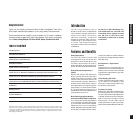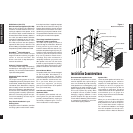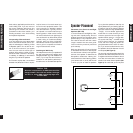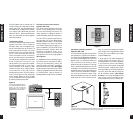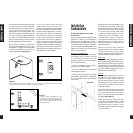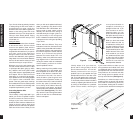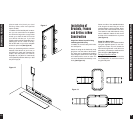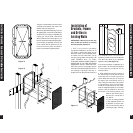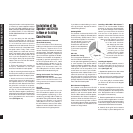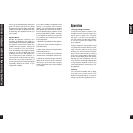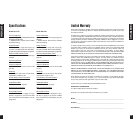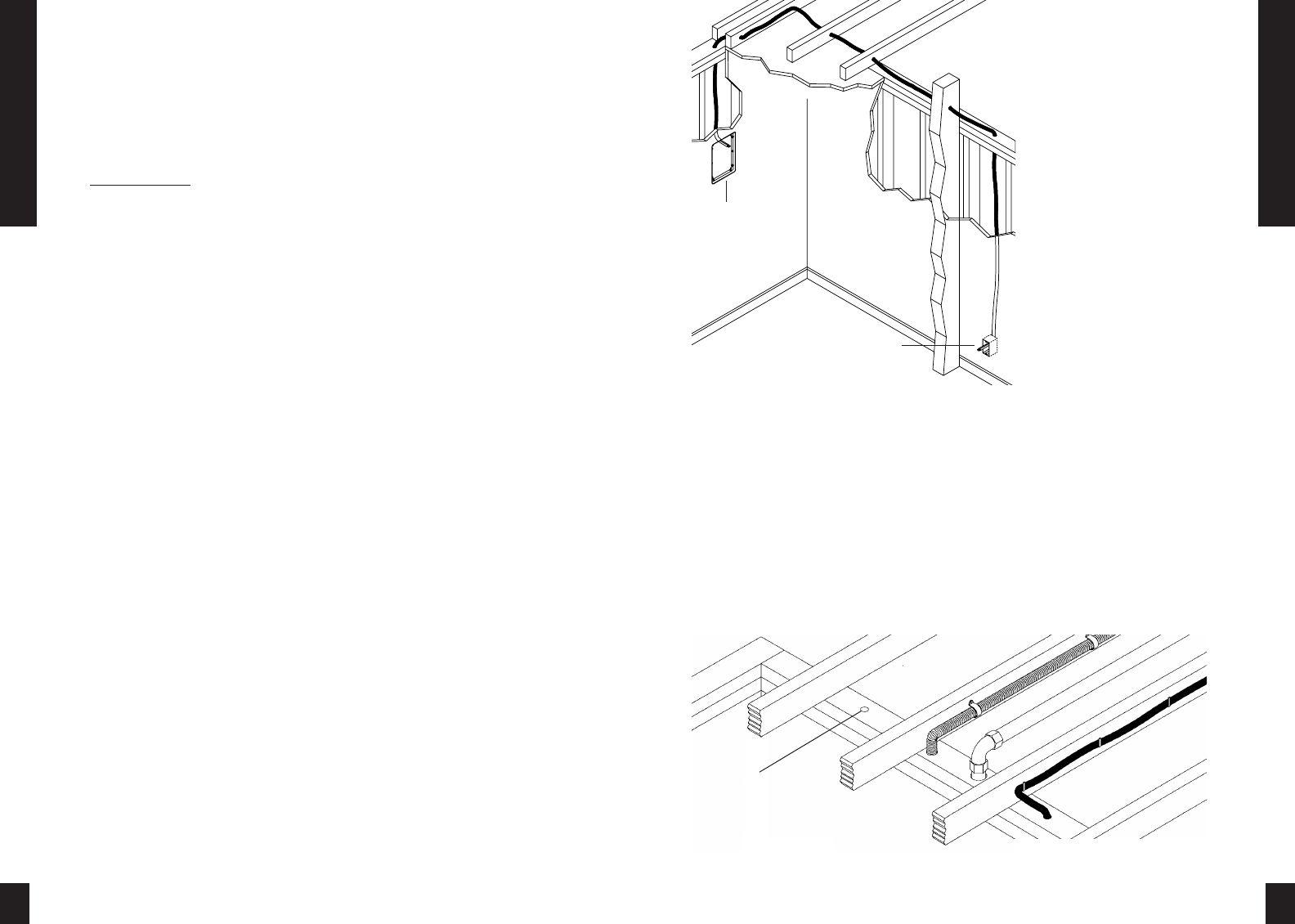
11
Installation Fundamentals
Try to line the holes up perfectly, because
it makes pulling the wire much easier. A
good technique is to snap a chalk line
across the face of the studs or against the
bottom of the ceiling joists. Then work
backward so that you can always see the
holes you have already drilled. Paying
careful attention to this will save you a lot
of time later on!
Pulling the Cable
Pull the cable in sections (from the stereo
to the volume control, from the volume
control to the speaker). Start with the
longest sections and use left-over wire to
complete the short sections. If you plan to
pull many rooms at the same time
through a central route, walk off the dis-
tance to each destination, add a generous
fudge factor for turns and other obstacles,
then cut off each section so that you have
a bundle of wires you can pull at once.
Whenever you run the wire further than
four and one half feet from a hole in a stud
or joist (open attic space, going up walls,
etc.), fasten the wire to the joists or studs
using cable clamps or appropriately sized
wire staples. The wire should not have
large sags in it, nor should it be too tight.
Try to protect the wire from being stepped
on in attics or other unfinished crawl
spaces. There are guard strips, raceways
and conduits which can be used to protect
the cable. Consult the local building code
for special requirements in your area.
Concealing Speaker Wire
in Existing Walls
This is actually a fairly simple task if you
restrict your choice of speaker locations
and wire routes to the interior walls or
ceilings of your home. Interior walls in
almost all North American residences are
hollow, so that it is easy to flush mount
speakers into them and route new speaker
cable around the house. What you see
when you look at the painted wall board,
plaster, or paneling is only the skin of the
wall. Behind the skin is the skeleton; two-
by-four wood or metal “studs” running
vertically from the floor to the ceiling in
walls and two-by-six or larger “joists” run-
ning horizontally in the ceilings and
floors. In between the studs and the joists
is the space for the wiring and plumbing
of your home.
Exterior walls are different. They must
insulate the house from the heat and cold
outside, so they are stuffed with insulation.
The national building code requires that
the hollow wall space in exterior walls be
broken by a horizontal stud placed
between the vertical studs. This “fire
blocking” makes it very difficult to retrofit
long lengths of wire. In some areas of the
country the exterior walls are constructed
of solid masonry, and have no hollow
space for speakers or wires.
Start by examining all the possible routes
you might take to run the speaker wire
from the speaker to the stereo. Use a stud
sensor or other device to locate the inter-
nal structure of the wall. You want to
avoid all studs or joists. A typical route
would be: from the speaker location up
the inside of the wall to a new hole drilled
into the top “plate” (horizontal two-by-
four at the top of the inside of the wall),
into the attic crawl space, and down
another plate to the wall behind the stereo
system itself (See Figure 9). The other
very common route is through the bottom
plate of the wall into an unfinished base-
ment or crawl space.
12
Installation Fundamentals
Identify where all of your electrical,
phone, and TV wiring is likely to be and
plan to route around it all. You can acci-
dentally induce 60 Hz hum on your
speakers if you run your speaker wire right
beside electrical wire for more than a few
feet. Try to keep speaker wire running par-
allel to power cables at least 3 feet away.
To find exactly where an electrical cable is
routed, try inspecting the inside of the wall
by turning off the breaker for a particular
power outlet or switch, removing the
cover plate and switch or
receptacle, and shining a
penlight into the wall. If you
have access to an attic or
basement space you can
quickly see which part of the
wall space the wire is free of
obstructions (See Figure 10).
When you don’t have access
above or below the wall, try
to estimate the existing wire
and pipe locations from the
positions of electrical outlets
and plumbed fixtures on both
sides of the wall. Take a look
at the outside of your house
too, sometimes conduit, vents
or drain pipe will be visible
that give useful information.
Choose the route with the
fewest potential obstacles.
If your house is built on a slab or you are
wiring between two finished floors, look
for baseboards which could be removed
and replaced with the wire behind them.
Doorjambs can be removed and often
have enough space for speaker wire all
the way around the door (See Figure 11).
Sometimes, an under-the-carpet run is
possible (there are special flat speaker
wires made for under-the-rug wire runs).
As a last resort, heating and air condition-
ing vents can be used as wire raceways for
Figure 9
Speaker
Location
Stereo
Location
Figure 10
Unobstructed space
for speaker wiring




